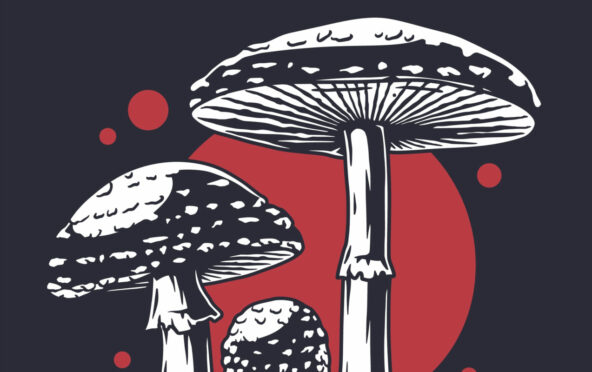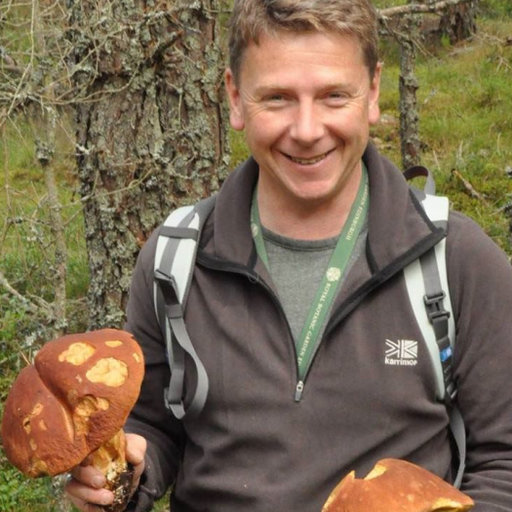
Mushrooms and other fungi are a key weapon in the fight against climate change as they soak up carbon dioxide, provide a life support system for plants and can even replace polystyrene, according to scientists.
Trees cannot grow without fungi at their roots or in the soil, and they operate a nutrient exchange system so both can thrive. Fungi are even intelligent enough to know they get a better exchange rate for their services in soils that are low in nutrients.
Now scientists in Scotland are working to gain more understanding about fungi’s role in carbon sequestration amid hopes they could tackle climate change caused by human activity.
Among the vital roles played by fungi is devouring the 460 billion tonnes of dead organic matter deposited on the Earth’s land surface every year.
New techniques are also allowing experts to harness the power of fungi to create biofuels and biodegradable packaging in a bid to reduce the use of plastic and fossil fuels.
Neville Kilkenny, a research associate in mycology – the study of fungi – at the Royal Botanic Garden Edinburgh, said people in the UK have traditionally been wary of mushrooms but they have the potential to help save the planet.
He said: “I don’t think this is an excuse for us to continue behaving the way we’re behaving on the planet but I think fungi will offer us a lot of solutions to try to dig our way out of the hole we’ve dug ourselves.
“I think our fungi will offer many, many solutions for a lot of our problems. The most important thing to take on board is that none of what we have already would be here without the fungi.
“It’s lovely to see people’s awareness as it slowly changes. Compared to mainland Europe, we’re generally a very myco-phobic nation. We tend to be very mistrustful of our fungi.
“We’ve moved on leaps and bounds as people realise these organisms are literally the saviours of our planet and will be the saviours of us as we dig ourselves ever-deeper into a hole with climate change.”
Fungi could have been on Earth for as long as a billion years, and no animals or plants would exist on land without them.
The world’s first reserve for fungi, as well as mosses, lichen and liverworts, is at the Cryptogamic Sanctuary in Dawyck Botanic Garden near Peebles in the Scottish Borders. Decades of research has been carried out at the site – home to more than 1,000 species of fungi – which this month featured on the BBC Alba show Gardens Of Scotland.
The role of fungi in creating new woodland and keeping trees and plants healthy is one of its most important modern-day contributions to fighting the changing climate.
Only a small number of plants in the brassica family, which includes cabbages and broccoli, do not need fungi to survive.
Two different types of fungi form mutually beneficial relationships with trees by keeping them supplied with food and moisture at their roots or in the soil beneath them.
Fungi create nutrient-rich soil by breaking down material like fallen leaves and dead wood.
They also form a “wood-wide-web” similar to a forest internet network, and the system allows trees to swap carbohydrates with other trees.
Up to 20% of the sugars that trees create by absorbing the greenhouse gas carbon dioxide along with sunlight and water are allocated for feeding their fungi partners. Fungi can also get a better rate for their services in soil that has fewer nutrients.
Kilkenny added: “Fungi bring everything to the world. There’s about 460 billion tonnes of dead organic matter deposited on the Earth’s land surface every year. If it wasn’t for recycling fungi that break down dead organic matter we would be absolutely drowning in the stuff.
“Also, our soil, our ecosystem, would be starving. But, luckily, we have all these species of fungi that recycle leaf litter and so on, and break down the dead wood and stuff, so all that nutrition is released back into the soil and therefore plants are able to thrive in those soils.
“But then there’s another group of fungi we call mycorrhizal which live on the roots of plants and exchange nutrients with the plants.
“Without that partnership, none of the plants growing in the soils could access enough nutrients or water to be able to thrive.
“You can’t say there’s a beech tree or there’s a pine, you have to say there’s a pine tree and a fungus because they don’t exist on their own. Not all, but nearly every single plant in the world requires a fungus growing on its roots to uptake enough nutrients.”

Enjoy the convenience of having The Sunday Post delivered as a digital ePaper straight to your smartphone, tablet or computer.
Subscribe for only £5.49 a month and enjoy all the benefits of the printed paper as a digital replica.
Subscribe